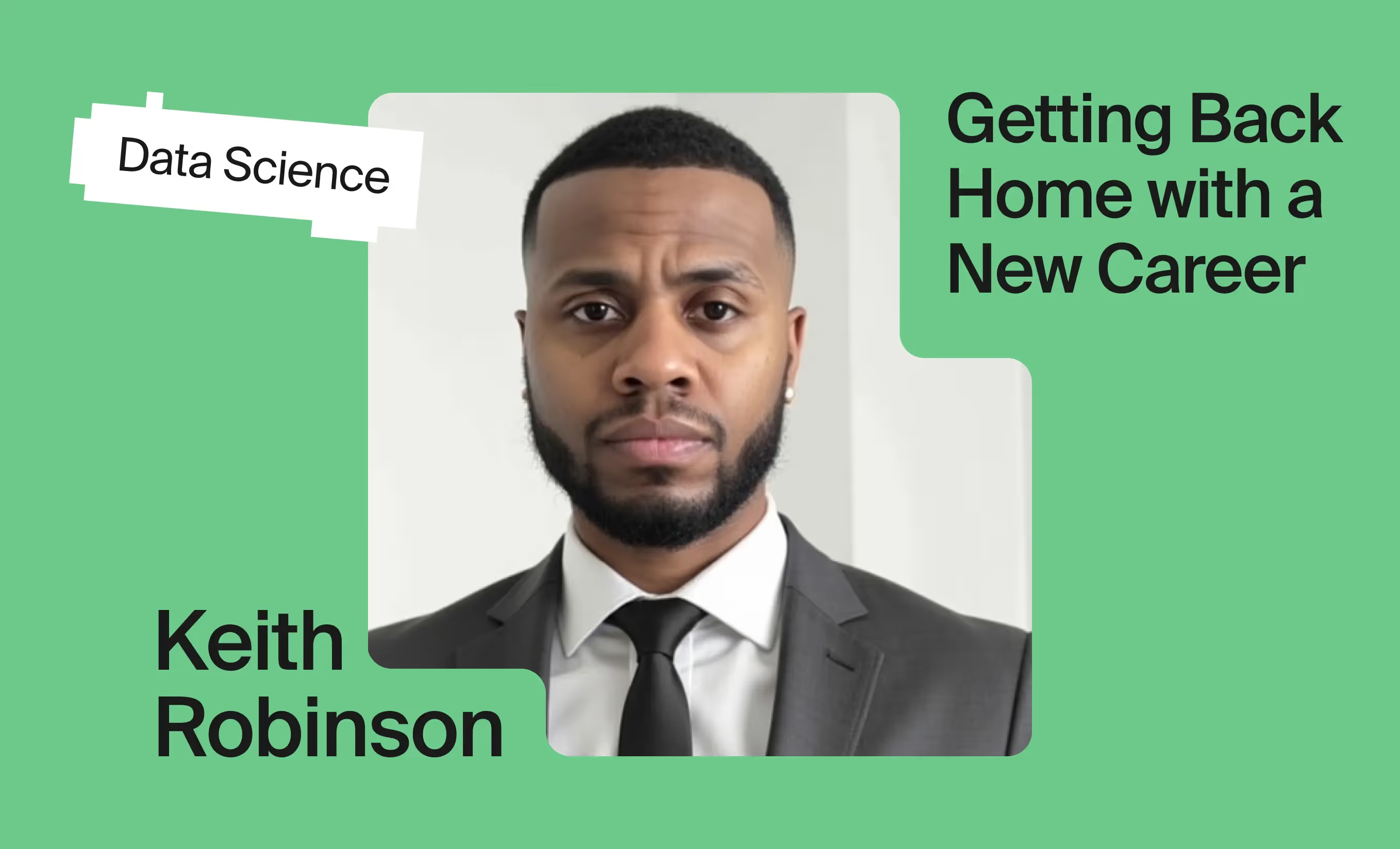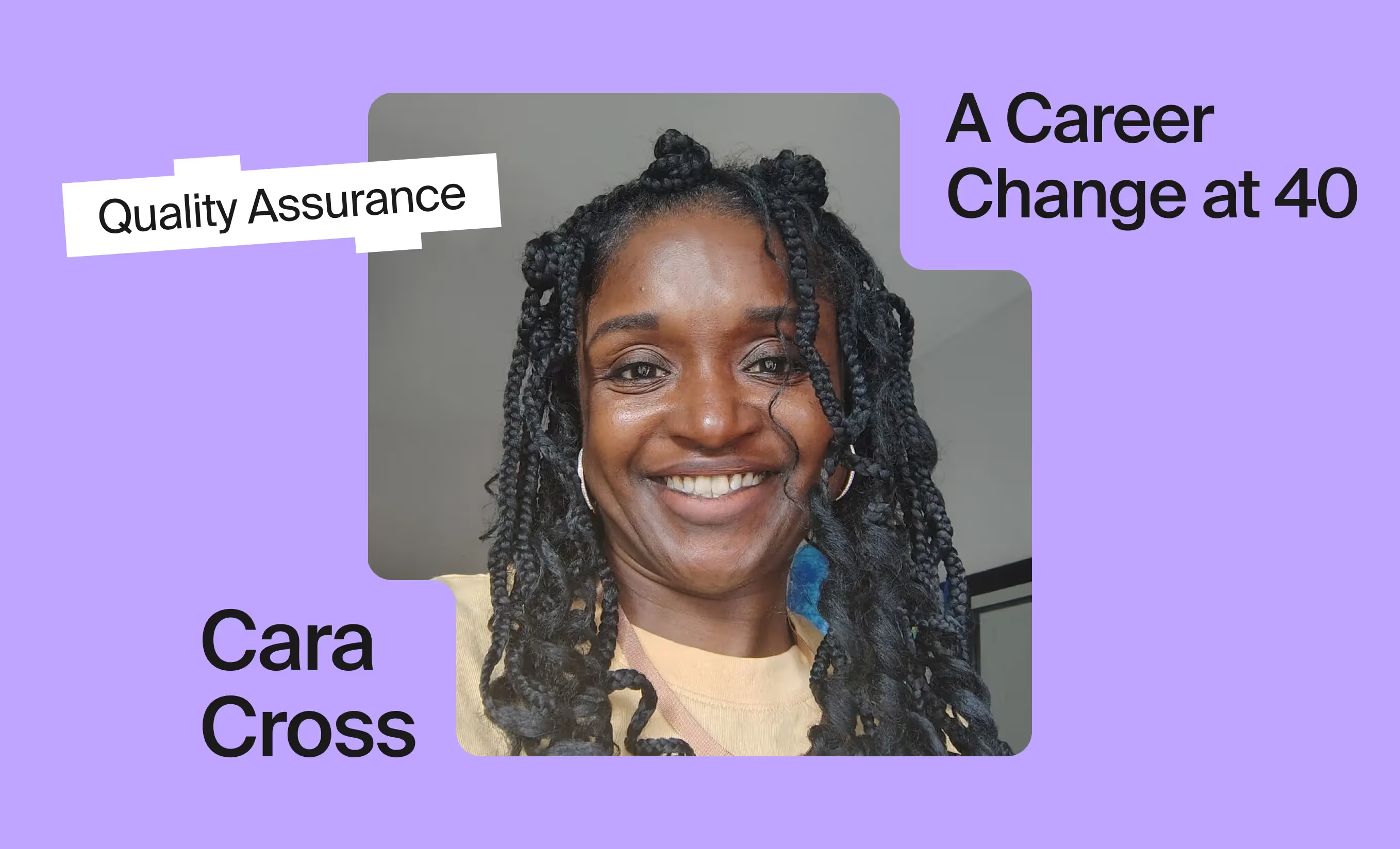Art and IT may seemingly be worlds away. Some artists view tech as a parallel universe, full of 0s and 1s. And this probably fuels their hesitation about making the switch! Well, this certainly isn’t the case – the tech industry is full of opportunities for those filmmakers, fashion designers, and animators who love learning new things, while still flexing their creative muscles. Here are three stories of artists-turned-TripleTen alumni, who dared to make a leap and start a new chapter of their lives as software engineers.
Animation → Software Engineering
Desiree Bradish, an animator and graphic designer, was feeling burned out from the long hours and low pay of her previous job. After some serious self-reflection, she opted for a switch to software engineering and began her training with TripleTen.
Desiree loved studying animation in college, but upon graduation, she realized that the industry was not prone to a good work-life balance. The pay was low, and the hours were long. Despite her passion for animation, she switched to graphic design, working for a local sign shop and for a children's show, while at the same time helping to take care of her nephews and nieces. Yet, she couldn’t shake off the feeling of unhappiness with her career and wanted a change.
Initially, Desiree considered UX design. But then she found out about software engineering. This seemed like a natural step, firstly, because she already had experience in building a website and a game together with her sister. And secondly, she enjoyed solving problems and creating processes that drove the story.
Unsure of how to break into the industry, Desiree found TripleTen through a scholarship program for women in STEM. She was pleasantly surprised by TripleTen's responsive admissions staff and impressed by its investment in student success. These factors convinced her to enroll in the program.
Desiree found the TripleTen experience to be more than worthwhile, boosting her confidence and significantly reducing her daily stress. And the best part was that soon after applying for a job, she secured a desirable offer.
I got really lucky. I got hired for almost the very first job I interviewed for. I felt prepared for all of the questions, and it was largely because I was able to talk to people in [TripleTen] Career Services.
Desiree found the tech industry’s environment to be generally more favorable to personal and professional growth than her previous experiences. She does not regret her decision to switch careers and is excited about her future in software engineering.
Fashion Design → Software Engineering

Isabelle Cuisset not only found a job in tech but also started her own business, thanks to what she learned at TripleTen’s bootcamp.
Working for several luxury brands, Isabelle Cuisset's career in the fashion industry spanned more than 20 years. But when the pandemic hit, she began to think about her future.
She and her friend decided to start a small fashion project. As they discussed website ideas, Isabelle was drawn to the world of coding and began exploring free online resources. However, she felt lost and unsure of what she needed to learn.
After researching online bootcamps for a while, she decided to enroll in the TripleTen Software Engineering Bootcamp, attracted by its positive reviews and the flexibility to learn at her own pace.
The bootcamp's two-week sprints, which included theory, coding practice, and project assignments with strict deadlines, challenged Isabelle to keep up with her studies. But with the support of professional code reviewers and live Zoom sessions with tutors and peers, she was able to land a part-time job offer in the fashion industry after just a couple of months in the bootcamp.
Even during my studies, I felt I was ready to get to the next level and start doing some serious software engineering. Because five months into the bootcamp, you get really advanced knowledge in HTML, CSS, and JavaScript.
Right after landing the job, Isabelle realized she didn't want to limit herself to just building a website. As a result, she started her own web design and development studio, specializing in building websites for independent consultants, artists, and designers.
Despite juggling two careers, Isabelle is happy and fulfilled, working part-time in fashion and spending the rest of her time building her own business. She loves working with artists and hopes to work with galleries and other art institutions in the future.
Filmmaking → Software Engineering
.jpeg)
A tech enthusiast and self-taught web developer, Zachary "Rex" Rodriguez followed his childhood passion for film, only to find limited opportunities in the industry. After completing the TripleTen Software Engineer Bootcamp, he landed a job in the IT industry and reignited his passion for technology.
Like many, Zachary's love of technology stems from childhood. Yet, when the time came to choose a career, he decided to study film instead. After graduating, however, he quickly realized it was much easier to find a job in tech than in film.
During his time as a film student, Zachary became involved in small online tech projects and taught himself basic web development skills. This led to his first job as a Salesforce and WordPress developer for a real estate company.
Zachary found fulfillment in web development and enjoyed the problem-solving aspect of the job. He enjoyed the TripleTen program and found it easy to balance with his other responsibilities, including a part-time job teaching coding to kids.
Zachary used TripleTen's career resources to polish his resume and conduct mock interviews, which led to two job offers. He accepted the offer from a multimedia company, Curious Media, and is now working on a Pokémon website. Zachary believes that there are many opportunities in programming that you never expect, and there is always more to learn.
"[My background in film] comes in handy in web development. Especially in things like user experience, you have to have a feel for what is right and what feels natural to the end user, and what's aesthetically pleasing."
You → Software Engineering
Do you want to acquire software engineering skills and get work opportunities like Zachary, Isabelle, and Desiree? Enroll in TripleTen’s Software Engineering Bootcamp, which industry leaders have recognized as the best coding bootcamp for three years in a row.
TripleTen bootcamps are beginner-friendly: you don’t need a background in tech to study with us. Most of our students manage to change their career paths and find a new job within a few months. They get hired by Tesla, Spotify, Google Play, and other industry leaders.
You can keep your current job while learning in TripleTen’s Software Engineering Bootcamp. It’s the no-risk and high-reward option.









.avif)


.avif)



